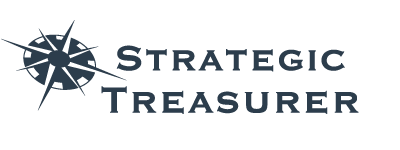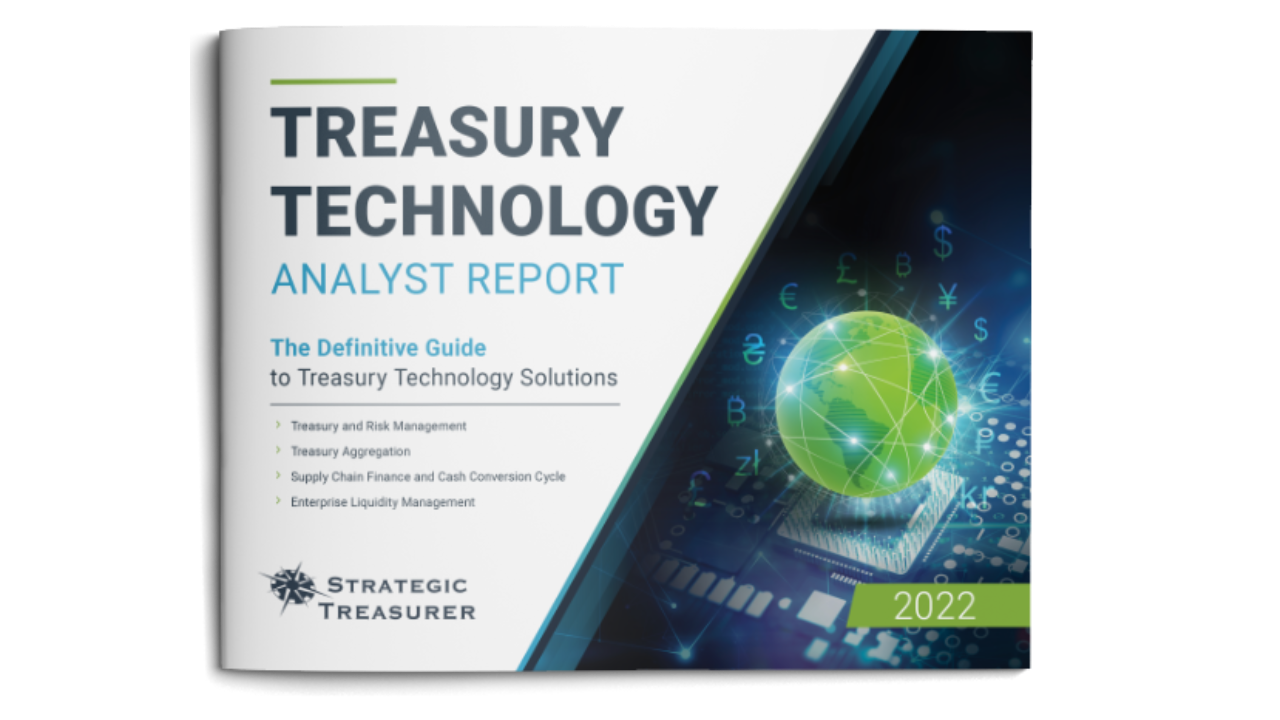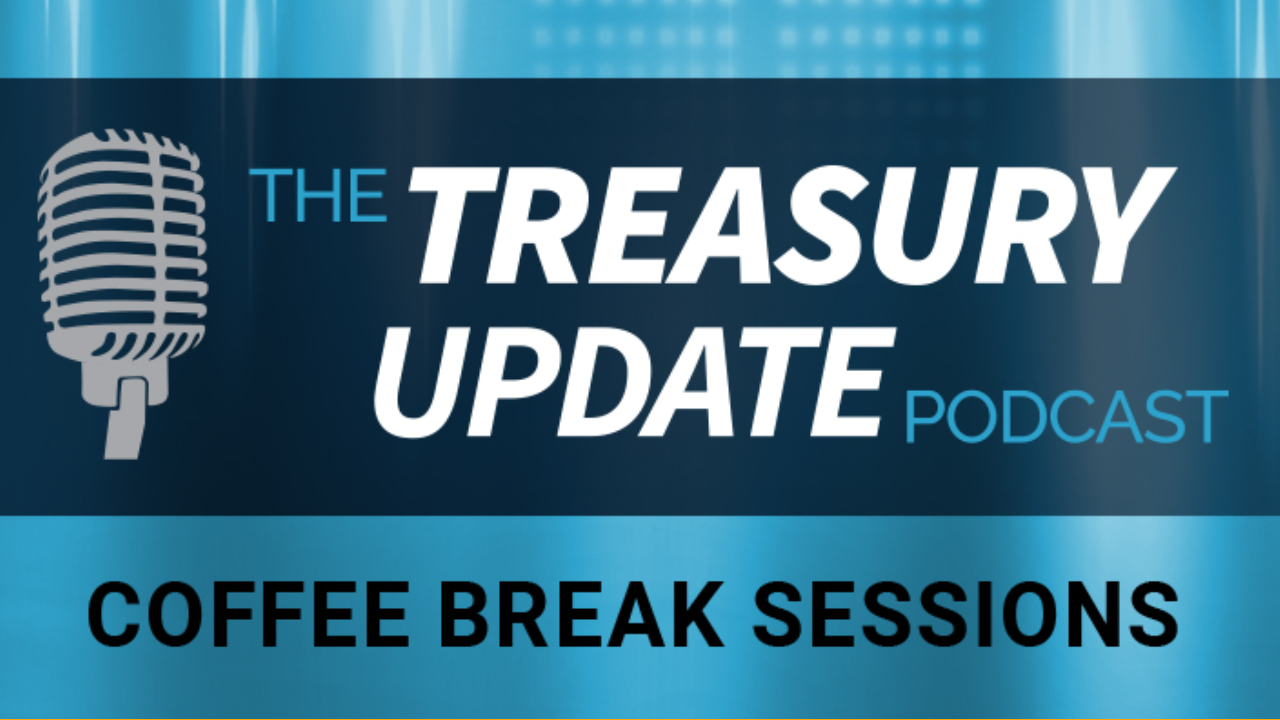
Session 77
Coffee Break Session:
US Economy FAQs
US economy, happy New Year. Coffee Break Session Host Jason Campbell catches up with Strategic Treasurer’s Senior Advisor Paul Galloway to discuss the US economy. They discuss what the Fed is looking at, the importance of knowing what the Fed is thinking, the rising rates, and how the Fed’s decisions impact our economy. Listen in and hear more about the US economy.
Host:
Jason Campbell, Strategic Treasurer


Speaker:
Paul Galloway, Strategic Treasurer


Episode Transcription - (Coffee Break Session Series) - Episode 77 - US Economy FAQs
Jason Campbell 00:03
Welcome to the Treasury Update Podcast, Coffee Break Sessions presented by Strategic Treasurer covering foundational topics and core treasury issues in about the same amount of time it takes you to drink your cup of coffee. I’ll be your host Jason Campbell, business development leader at Strategic Treasurer. Welcome to another episode of Coffee Break Sessions. The one cool thing about this episode is it’s a new year. So happy 2023 to all of our listeners out there. And you know, I think today’s topic is going to resonate quite well with our audience. So chatting with us today is going to be Paul Galloway, senior advisor at Strategic Treasurer, Paul, how are things going and Happy New Year to you?
Paul Galloway 00:42
Thanks, Jason, Happy New Year to you as well, things are going just fine from my perspective.
Jason Campbell 00:49
You know, I don’t know about you, but I think 2022 just flew by. It seems like it was only yesterday that it was in the springtime. And here it is. It’s we’re celebrating January. And it’s just seems like it’s just gone so fast. And maybe it’s just because of all the recent events and things that have gone on in the world, in both not just in Treasury and finance, but just in the world in general, and maybe just things has expedited a little bit coming into this new year. But I know today’s topic is something that you know, a lot of folks are curious about is what that outlook is going to look like for 2023. You know, we lead in our previous sessions, we’ve talked about it we heard in the news about you know what to expect for 2023 analysts are coming out, you know, senior executives are starting to speak out or have been speaking about what they feel is going to happen in this up in this in this new year that we’re experiencing. So we really want to touch base on the US economy for a little bit. So Paul, what is what in your mind said what do you think is what’s the Fed looking at exactly going into this new year?
Paul Galloway 01:53
Jason, I don’t think that the feds going to be looking at anything different than what they were looking at last year, the things that they were focused on or prices, so inflation, particular core inflation, nonpayroll prices, so they’re looking at jobs is the market adding jobs at a faster rate than what they really want to have because as payrolls are rising, as prices are rising, that just exacerbates the issue that the Fed is trying to fight, which is keep control of the economy, so it doesn’t grow too fast, or run out of control. You know, that’s why they’re always looking at GDP a target 3% 2% 3%. You know, they’re at the lower range in terms of growth. And what we’ve had in the recent span is we had frothy growth in prices were rising, it’s been more challenging with COVID, there continues to be issues, war in Ukraine, trade aspects with China, we’re having some impacts that are occurring on a global basis. So so the Feds looking, looking not only at US metrics, but they’re also looking globally and looking at what’s going on outside the US as well, until interest rates rise high enough, and jobs or slow down, meaning that job growth has slowed down, you know, and payrolls are tampered down to where they’re not going up and up and up, then we’ll see that the economy will get to a point that it can start working towards growth, but in the meantime, we’re gonna have some economic pain.
Jason Campbell 03:40
You know, you brought up some really good points there. You know, as we think about the economy, there’s a lot of things that you just kind of kind of pick apart, right, and just kind of see what that chess move is going to look like inflation jobs, supply chain GDP, the R word recession, right. So why is it important to know what the Fed is thinking?
Paul Galloway 03:59
Anybody that’s following fed notes or Fed minutes are looking for the words or the language that they’re using, because the Fed is basically the litmus test for how they perceive the economy is doing and how it’s going to do. And so the way they phrase things, and the actions that they take matter, and it has an impact on everybody’s 401k and retirement plans. If the Fed comes out with a very hawkish or dovish position, it can move markets one way or the other. And so people are constantly paying attention and listening to what the Fed is thinking. It’s extremely important.
Jason Campbell 04:43
So it’s what you’re talking about, you know, listening in to to what the Fed is thinking or what they’re saying or what they’re doing, right. I know one way to grab the attention of an audience right is to raise some interest rates, so this past year and 2020 to raise the rates in four different times. So over the course of 2022, and so and we know that from, you know what that what those rates have done, whether it’s through the stock market all of a sudden has seen some some big changes or, you know, lending and bank interest rates and what that means overall from an economy perspective. But I guess the other question is that, you know, sometimes you listen to the media, and you don’t really know for sure, How’s that supposed to make you feel? is raising rates? Really? Is it a good thing? Or is it a bad thing?
Paul Galloway 05:27
It depends on your perspective. So it can be a combination of both. In the case of what the Feds doing right? Now, it’s a necessary thing that has to be done. If we were to allow rates to be as low as they were, the economic damage that they would create to the US would be astronomical, it’d be huge. From our perspective of the need to raise rates to get the economy cool down. It’s unnecessary thing. So it’s good in the fact that the feds reining in the economy so that it doesn’t get out of control to where it has a severe negative impact on all of us as a whole. And so raising the rates, like they’re doing right now is is a good thing. Well, the flip side perspective, and I’ll come back to the good as well, because there’s more on the good side, the bad thing about rising rates means that that you potentially are going to Well, in the case, what we’re doing here is impacting jobs. It’s impacting payrolls. And so you’ve seen companies out there that are laying folks off, and have pulled back on job offers. And that’s going to continue to happen. And it’s, it’s unnecessary pain, to protect the US economy as a whole. And so it’s, it’s a bad thing you don’t like hearing people losing jobs, it’s impactful to them and their families. And, you know, that really is bad. So these are the things we don’t like to think about. Now. There are some other considerations from a financial perspective, that make rising interest rates both good and bad. So from the good perspective, you can think about treasurer’s out there that are managing the yield on their cash, or they’re trying to get a return on the cash, but with the rising rates, and their short term mandate with cash, ECR rates, so that’s the earnings credit rate that banks pay for deposits, those typically go to offset bank fees. And so you can think of it as a soft return, or soft dollars that come soft dollars, you don’t actually physically see those dollars, they they go to offset banking fees. And so we haven’t had that in quite a while on nor start to get that today. So yields are getting better, you’re able to start getting some ECR where you can start offsetting bank fees, because you haven’t been able to for quite some time, the thing that hinders the success of that is the inflation part. And so until we get an inflation down to the point where real returns are positive, and what I mean by real returns is, most people will see the paper return, which is a nominal return, it doesn’t take into account inflation and current environment, we have high inflation. And it with high inflation, you can offset nominal returns to the point that the real return is actually negative, or zero, cash, you don’t see cash returns be zero. But real returns, when you look at it that way. It definitely can be impacted. So those are some things that you consider in terms of a treasurer wanting to raise capital, the cost of raising capital for treasures today is rising. And that’s because rates are rising as rates rise, costs will rise. But if you were to look at the yield curve, over time, the short end rates are the ones that have been rising in the longer term have been dipping down. So we kind of have, we’re heading towards this inverted yield curve, where shorter term rates are higher than longer term rates. So the duration of their funding is also changing in terms of how they raise capital. So they’re thinking about that as well. The other thing is that home mortgage rates have increased because interest rates is in increase. Same thing for financing vehicles, all these rates go up as interest rates go up. And so all that goes towards trying to slow things down. So people are buying more homes, building more new homes, buying more cars, buying more goods and services. And so as rates rise, you tamper that down in the long term that will help the economy heal itself and get towards that recovery.
Jason Campbell 09:55
So that was some pretty insightful details that you just provided on that and I think that you know, again, You’re right I think it is depends on how you look at it and which side of the table the coin and and I think ultimately we could see how these fed decisions ultimately impact our economy as you just laid out some some examples around home buying and you know, even for raising capital, so really do appreciate that, Paul. Well guys, thank you so much for joining Paul and I today, Paul again, happy new year really appreciate always talking with you. And for our listeners, please be sure to tune in every first and third Thursday of the month for a new episode of the Coffee Break Session. As usual. If you have any questions, comments or feedback, please send us a note at podcast@StrategicTreasurer.com. Until next time, take care.
Announcer 10:39
This podcast is provided for informational purposes only and statements made by Strategic Treasurer LLC on this podcast are not intended as legal, business, consulting, or tax advice. For more information, visit and bookmark StrategicTreasurer.com.
Researching new treasury and finance technology can be overwhelming. Strategic Treasurer has stepped in to help. Explore our definitive guide to the treasury technology landscape and discover detailed, data-based coverage of:
- Treasury & Risk Management Systems
- Treasury Aggregators
- Supply Chain Finance & Cash Conversion Cycle
- Liquidity Enterprise Management
A part of the Treasury Update Podcast, Coffee Break Sessions are 6-12 minute bite-size episodes covering foundational topics and core treasury issues in about the same amount of time it takes you to drink your coffee. The show episodes are released every first and third Thursday of the month with Host Jason Campbell of Strategic Treasurer.




